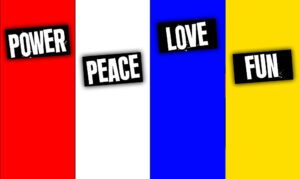What is the White Color Code Personality Type?
The White Color Code Personality Type is motivated by peace and will do almost anything to avoid confrontation. They like to flow through life without hassle or discomfort. To Whites, feeling good is even more important than being good.
White Personality Type cross-reference
- Keirsey Type – Guardian
- Temperament Type – Melancholy
- Animal Type – Beaver
- DISC Type – Compliant
- Socio-Communicative Type – Analytical
- True Colors – Gold
- Personality Compass – East
- Occupational Type – Realistic
- Learning Type – Pragmatist
- Leadership Type – Avoider
MBTI Personality Types (xSxJ) – Sensing and Judging
Enneagram Types
- Type 1 – The Reformer (All Judging)
- Type 2 – The Helper (ESFJ, ISFJ)
- Type 6 – The Loyalist (All Sensing)
- Type 8 – The Challenger (ESTJ)
White Personality Type Careers
What are the Color Code Personality Types?
Dr. Taylor Hartman created The Color Code Personality Type, or The People Code, which classifies Personality Types by Core Motives.
It helps you understand an individual’s motives and the “Why people do what they do” to gain insight into people’s behavior and build more effective relationships with the people you interact with regularly.
The system helps you recognize your innate strengths and limitations and shows you how to use those traits in your personal and professional life.
The Color Code Personality Type system is similar to the four core Personality Temperaments. Still, it focuses more on the individual’s core motivations.

Personality Temperaments, Traits, and Types
Personality Temperaments, Personality Traits, and Personality Types are used in Psychology to discuss a person’s Personality, a collection of Emotions, Perceptions, and Actions that interact with each other, regulate themselves, and shape a dynamic system that forms a person’s Behavioral Patterns.
Your inherited traits (your personality Temperance) and acquired traits (such as education, socialization, and other various pressures and aspects) form your Personality.
A Personality Type identifies a specific collection of Traits, both learned and natural, that comprise a broad, general Personality Classification—a way of labeling a collection of traits and behaviors.
A Personality Trait remains consistent and stable over time, which means you exhibit the same pattern across different situations and throughout your life.
Three criteria characterize Personality Traits: (1) consistency, (2) stability, and (3) individual differences. For example, if you are talkative at home, you also tend to be talkative at work. And if you were talkative at age 20, you would still be chatty at age 40.
Personality Temperament is your “Naturally Intuitive” biological Trait. These Traits are partly inherited from your genes and partially determined by your brainstem, which doesn’t change throughout your life. These are Natural Traits regarded as innate or inborn and not learned.
Your Personality Temperament is formed as an infant and is hard to modify, manipulate, or change because it is genetic. In some way or another, your inherited behavioral tendency will always be there.
Personality Traits are quantitative differences between people, and Personality Types are qualitative differences between people. The most crucial difference between the Trait Theory and the Type Theory is that the Type Theory views people’s characteristics as discrete categories, while the Trait Theory views these characteristics as a continuum.
For example, while a Type Theorist would claim that introverts and extraverts are two types of people, a Trait Theorist claims that extraversion is a gradient, and individuals can fall somewhere in the middle.
Your Temperaments, along with acquired Traits, form your Personality.
White Characteristics

- Model of gentle human dignity.
- Quietly move through life with an effortless, unruffled style.
- Whites are usually challenging to know.
- They are often lost, inviting others to rescue and protect them.
- Whites can be timid.
- They can be challenging to read.
- Whites can be very passive.
- They doubt themselves.
- Whites are tolerant of disagreeable behavior regardless of personal discomfort.
- They are pretty impressionable.
- Hold their true feelings close to the heart, safely tucked away from others.
- Whites are capable of blending in.
- They often remain unproductive dreamers.
- Highly unmotivated – Until goals and commitment are established.
- Capable of being the best friends to all personalities.
- Look to others rather than to themselves for excitement – Boring and lazy.
- Timid and emotionally unsure.
- Gentle and even-tempered.
- They rarely seek leadership positions.
- Whites can be firm and stubborn – Give the silent treatment because they are uncomfortable with confrontation.
Whites need kindness.
While Whites respond beautifully to thoughtfulness and amiability, they have a robust, silent stubbornness that surfaces when treated unkindly. They resent being scolded and dislike harsh words.
Whites open up instantly to people who are kind but recoil from those who are hostile.
They are motivated by kindness—and can’t understand why other people are unkind.
Whites prefer quiet strength.
Whites enjoy their peaceful independence. What appears to some people as quiet desperation can show itself to be bullheadedness.
Those who misinterpret White’s peace-loving nature as an invitation to be demanding, pushy, or bossy will soon meet a wall of passive resistance. Whites can be way more challenging than people think.
Whites like to keep a low profile.
White-type people want to be asked their opinions and won’t volunteer them.
They value the respect of others, but they rarely go out of their way to seek it.
Whites must be coaxed to discuss their skills, hobbies, and interests.
Whites are independent.
Unlike Reds and Blues, who want to control others, Whites seek to avoid conflict and often comply with unreasonable demands—to keep the peace.
Whites refuse to be under another’s thumb, especially when treated without the respect they deserve. They will only express their anger and frustration when they can no longer be bossed around.
Whites want to do things their way, in their own time and don’t like to be pushed. They can be fearsome when they finally “blow up.”
They don’t ask much of others and resent it when others demand things from them.
Whites are motivated by other people’s desires.
Whites are open to others’ recommendations on ways to resolve any situation.
White-type executives value new management ideas from employees.
Strengths
- Blends into all situations.
- Strong empathy skills.
- Receptive to suggestions.
- Slow to react to anger.
- Non-demanding.
- They enjoy observing others.
- Loyal and committed to the relationship.
- Quiet, reflective, and peaceful.
- Sincere and genuine lifestyle.
- They appear to accept life comfortably.
- Patient with others.
- Kind to animals and people.
- Patient and enduring through good and bad times.
- Tolerant of unkind behavior.
- Supportive and accepting.
- Listens with empathy.
- They are relaxed in most situations.
- Likes most people.
- Most people like them.
- Compatible with different personalities.
- They enjoy observing others.
- Non-demanding of friendships.
Weaknesses
- Takes a passive approach to life.
- Dishonest with feelings – Often agrees only to please others.
- Sees goals as demanding and, therefore, restrictive.
- Fears change and risk-taking.
- Lacks creativity to make suggestions.
- Too accommodating.
- Takes a passive approach to life.
- Unresponsive or not openly excited about experiences.
- They have problems becoming intimate.
- Bashful and unsure of self.
- They are easily manipulated into changing plans.
- Ambivalent about direction and goals to pursue.
- Often lazy and unwilling to take responsibility for themselves.
- Resists making commitments.
- Lacks creativity to make suggestions.
- Others’ opinions quickly lead them.
- They won’t express an honest perspective if it is controversial.
- Requests extra protection and a lot of support.
- Easily hurt and defeated.
White Communication Style
Do’s
- Be kind.
- Be logical, clear, and firm about the content you present.
- Provide a structure (boundaries) for them to operate in.
- Be patient and gentle.
- Introduce options and ideas for their involvement.
- Be straightforward and open.
- Acknowledge and accept their individuality.
- Be casual, informal, and relaxed in presentation style.
- Look for nonverbal clues to their feelings.
- Listen quietly.
Don’ts
- Be cruel and insensitive.
- Expect them to need much social interaction.
- Force immediate verbal expressions; accept written communication.
- Be authoritative and too intense.
- Demand conformity to realistic expectations/behaviors.
- Overwhelm them with too much at once.
- Force confrontation.
- Speak too fast.
- Take away all their daydreams.
- Demand leadership.

